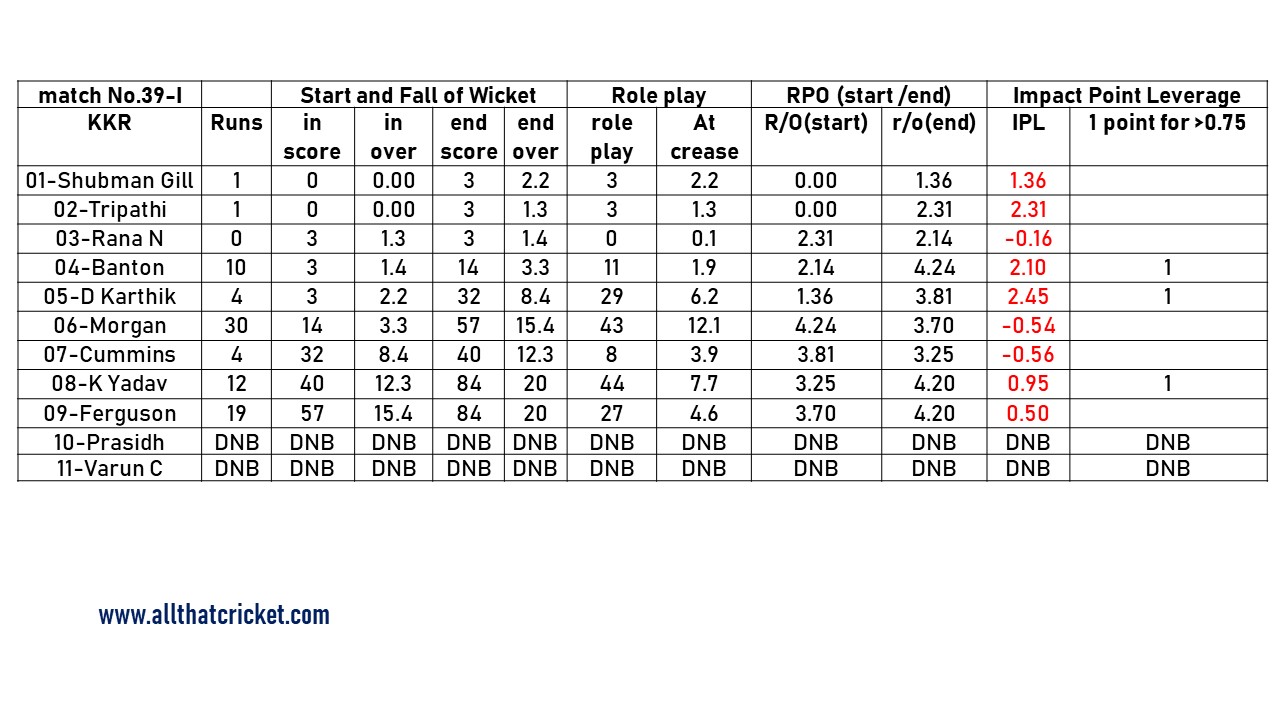Impact Points Leverage (IPL)
There are many ways to measure a batsman’s overall performance – strike rate, boundary rate, scoring rate, staying at crease and few more.
However i have always been keen to know their contribution to team’s run-rate. While he was at the crease how much did the team gain in terms of RPO!.
Here am not suggesting that his power hitting or speed of his batting is ignored, but an Impact Point Leverage (IPL) is as crucial as other measurement.
I am keen to know whether the team’s run-rate progressed from the point batsman came to the crease till his innings’ ended, or did it remain same or decreased?.
If it progressed anything above 0.75 then he gets 1 (IPL) Impact Point Leverage for his batting. He doesn’t get any point if its below standard impact point leverage.
For instance when a batsman comes into to bat with team’s RPO is 6.00 (30/1 -5 overs) and gets out at score of 70/2 in 10th over. Here RPO is 6.00 when he came in, and 7.00 when he got out. It suggests that he along with his partner were able to increase team’s run-rate to 1.00+ point.
This analysis can also be applied to openers but with one condition. Since run-rate is 0.00 when a team start their innings, hence we take a standard bar (subject to which format he is playing) of 6.00 in T20 cricket. It means he gets 1.00+ point if he gets out when team RPO is above 6.00.
Below is explanation of this analysis from match No. 39 KKR v RCB
I have given this indicator almost a year (post WC 2019) to test it, and now i am satisfied with its accuracy, especially for batting positioning!. Hence this new Index Point Leverage will feature regularly in my analysis with other Batsmen’s KPI (Key Performance Indicator) for limited over format.



